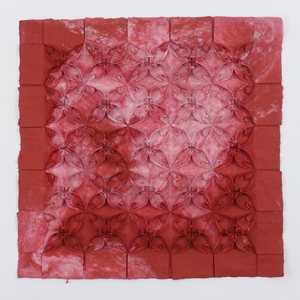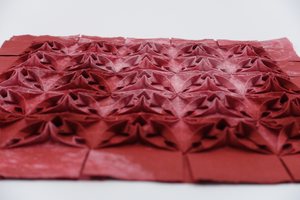Two-in-One Flower Tessellation




A recent fold of my Two-in-One Flower Tessellation. Even though there is only one kind of molecule in this model, depending on which point you treat as the flower’s center, you can see two different kinds of flowers in the pattern.
Model folded from John Gerard’s handmade paper (abaca with cotton). The top-down view highlights the uneven border of this sheet, typical for handmade papers. Such a border gives the folded tessellation a distinctive look (in the case of most figurative models, large parts of the paper edge would be hidden). At the same time, it poses a challenge since the edge can not be used as a reference when folding the model. This is not a big issue if you fold the whole grid, but for folding a clean grid-based model without precreasing unnecessarily visible creases, not being able to use the edge when constructing the precrease can make matters much more difficult.
The close-ups show how the molecules pop up from the tessellation’s plane.
Happy Easter!
Comments